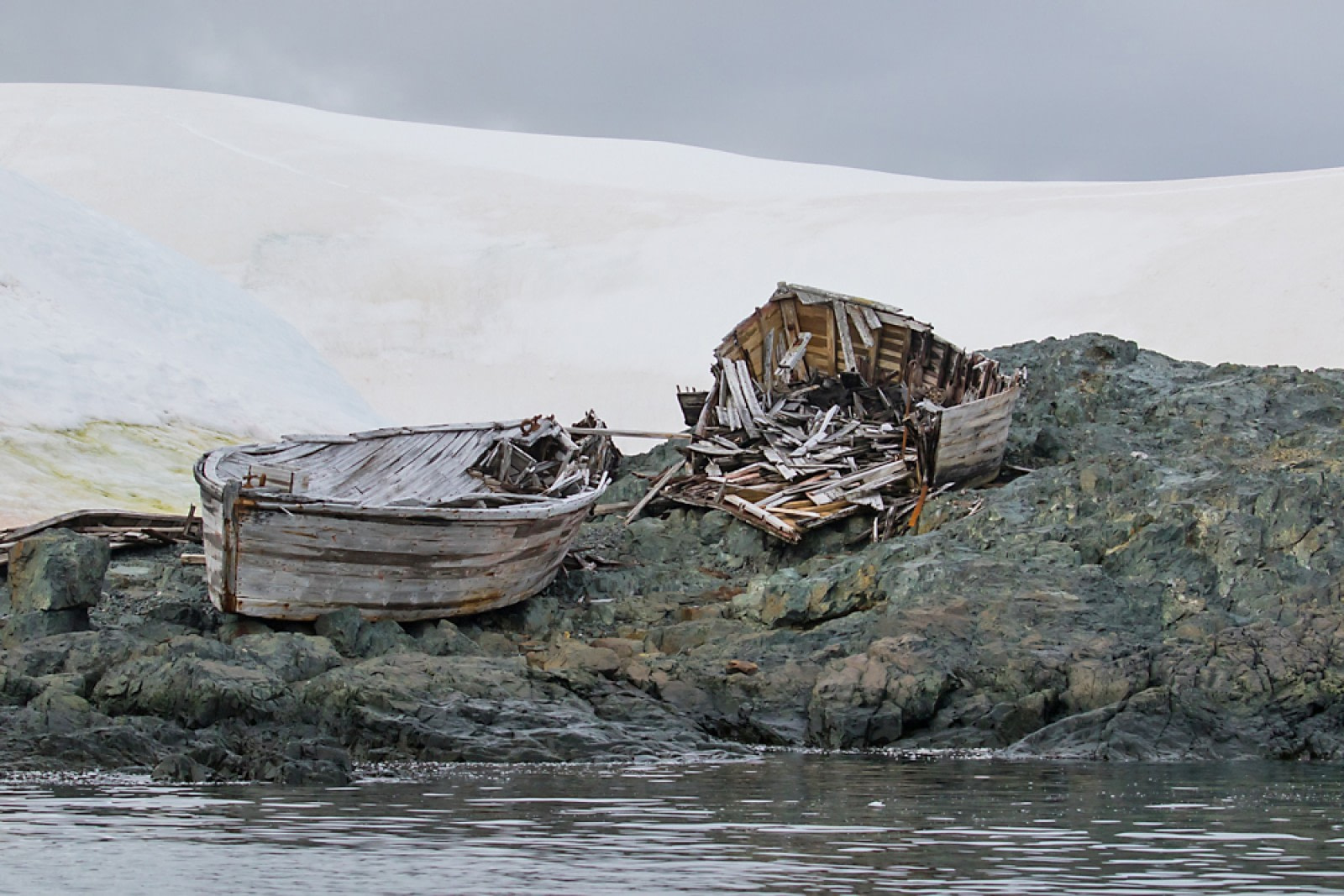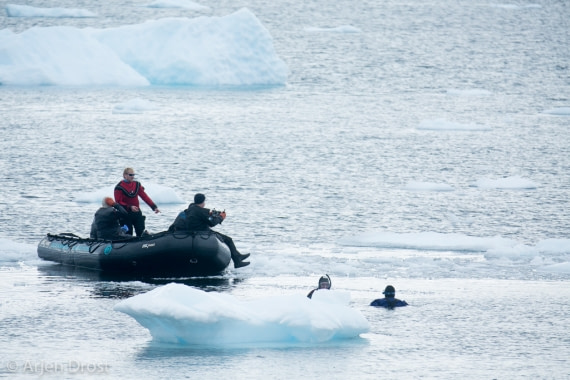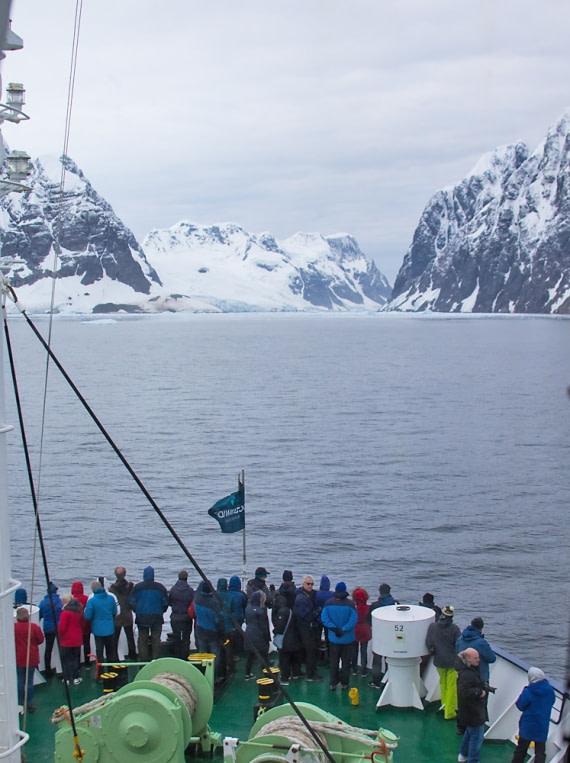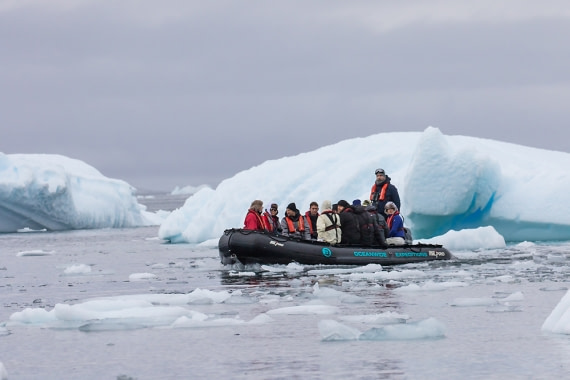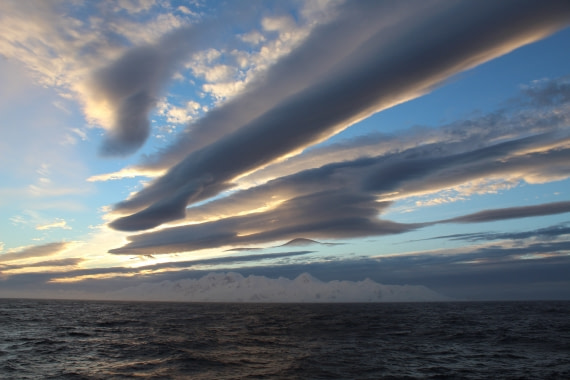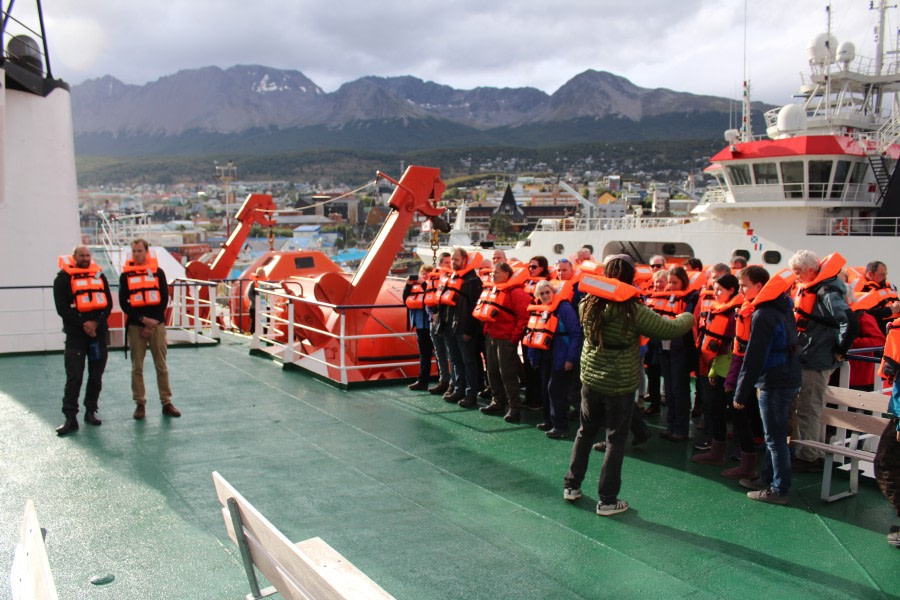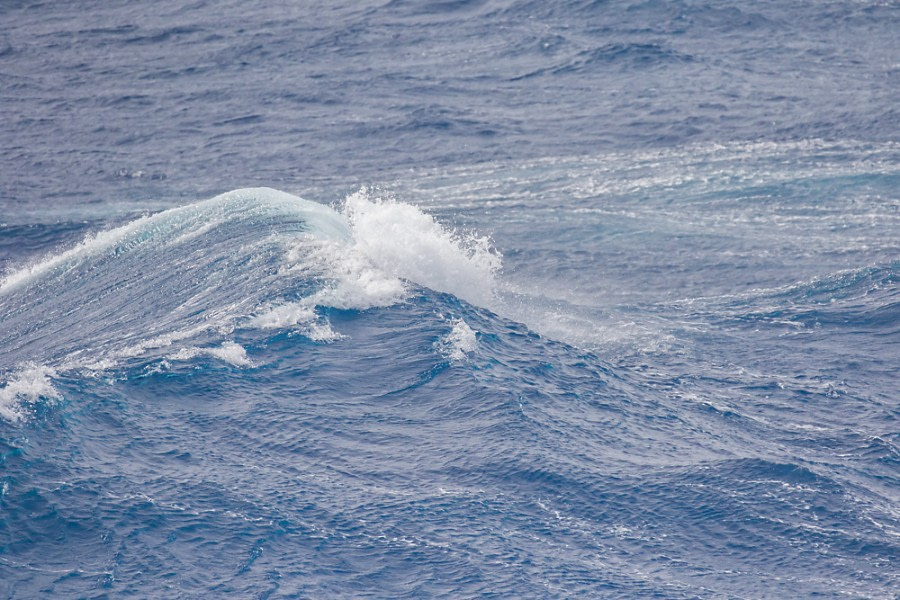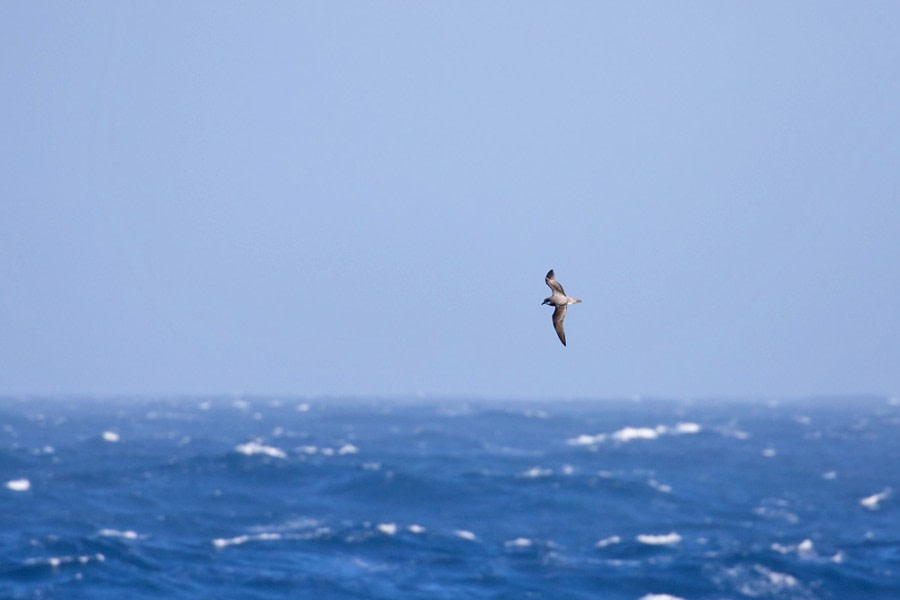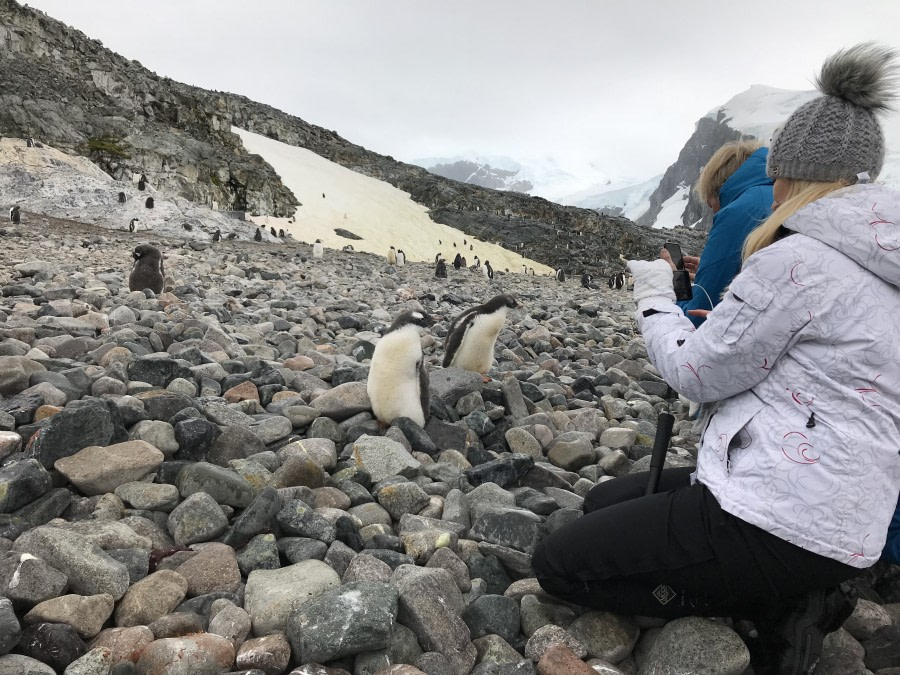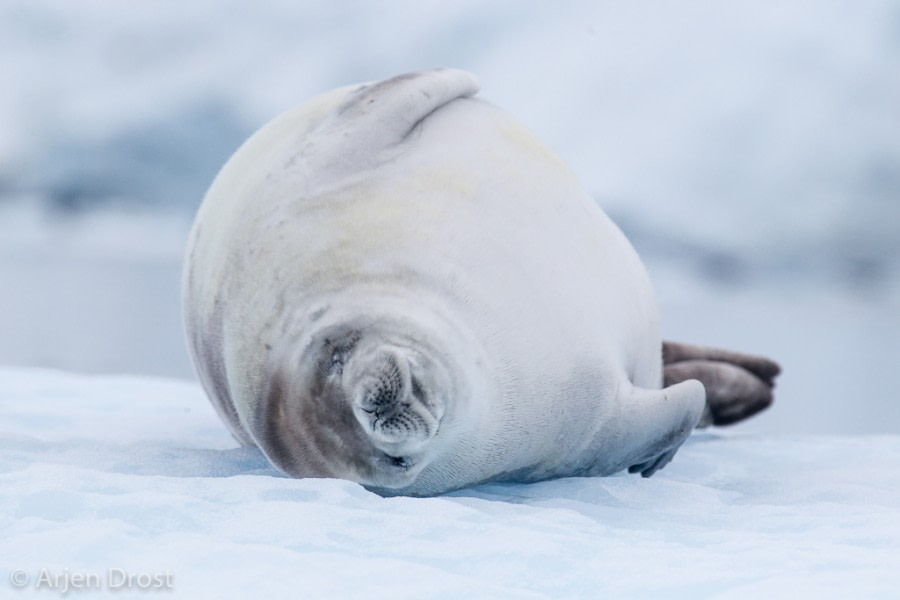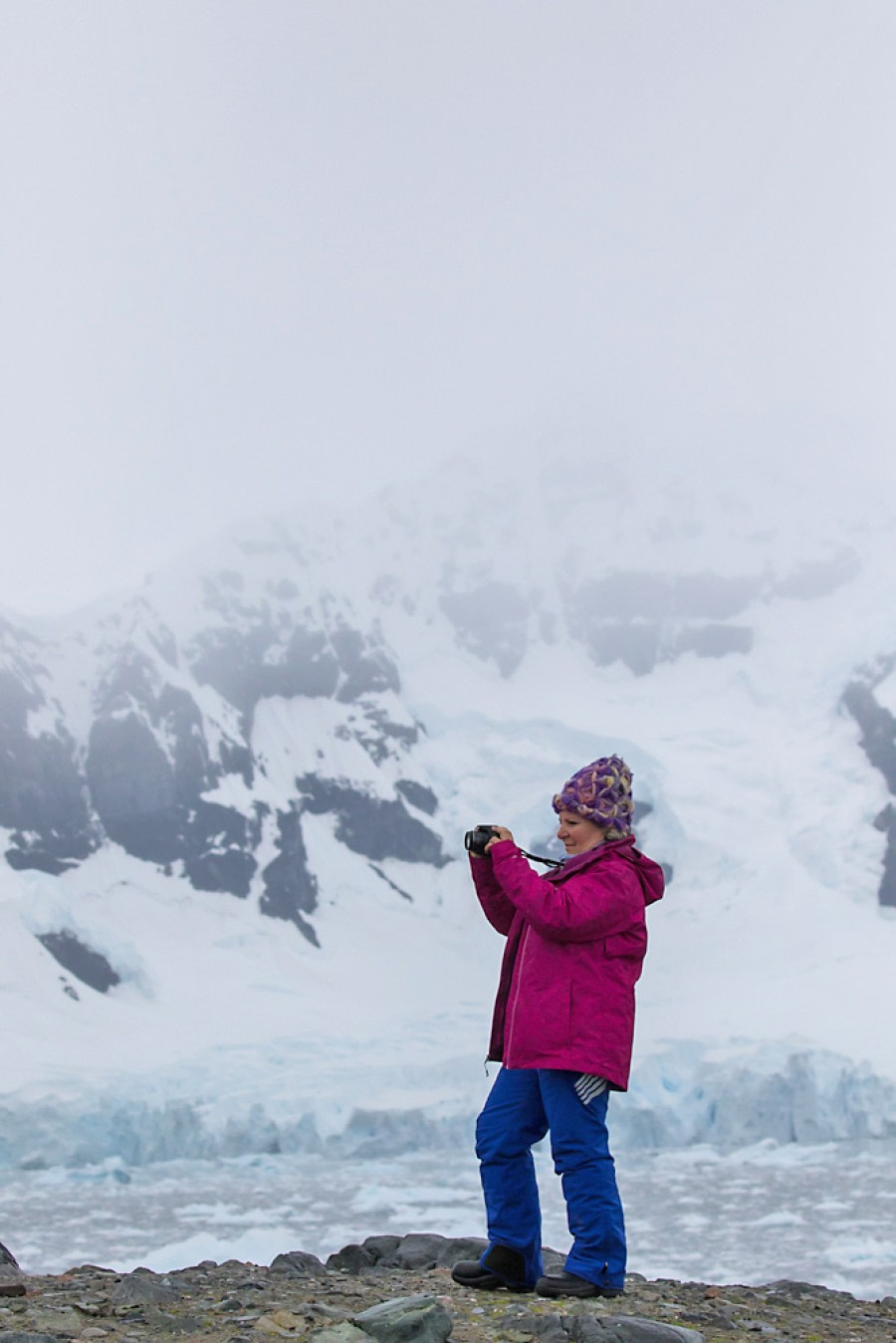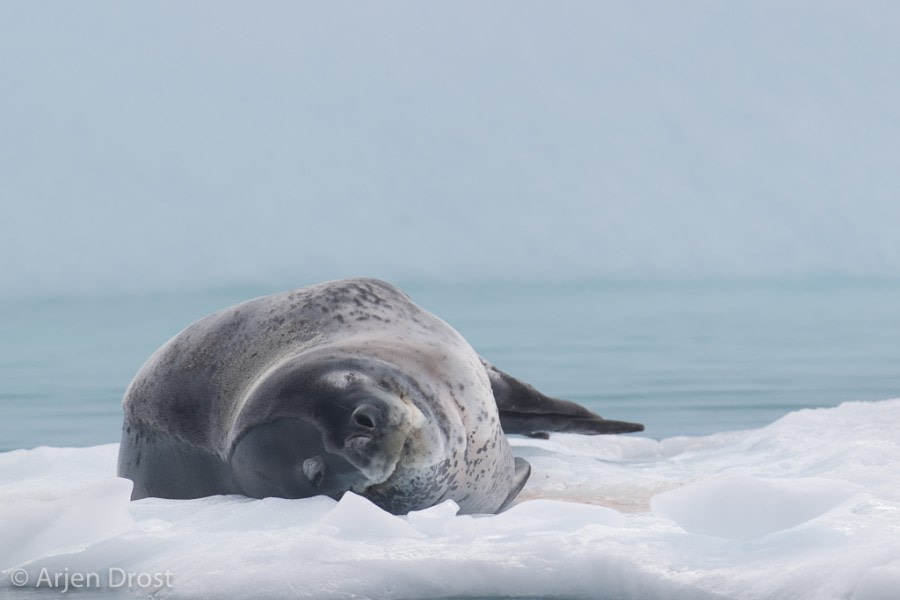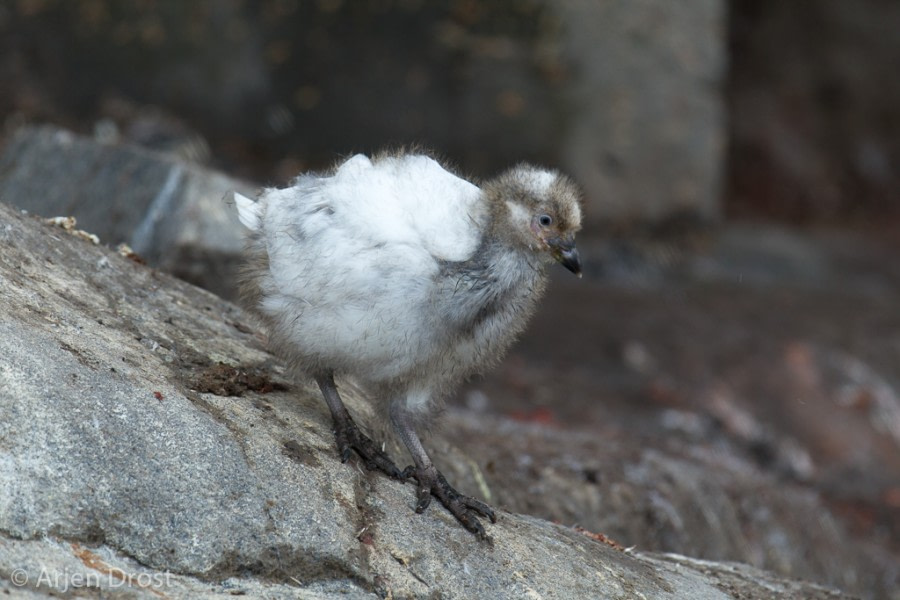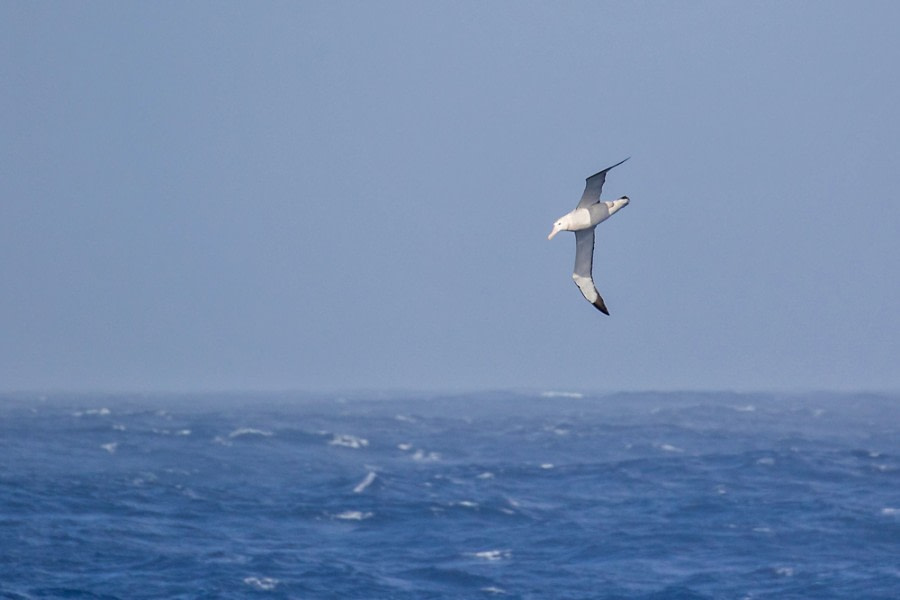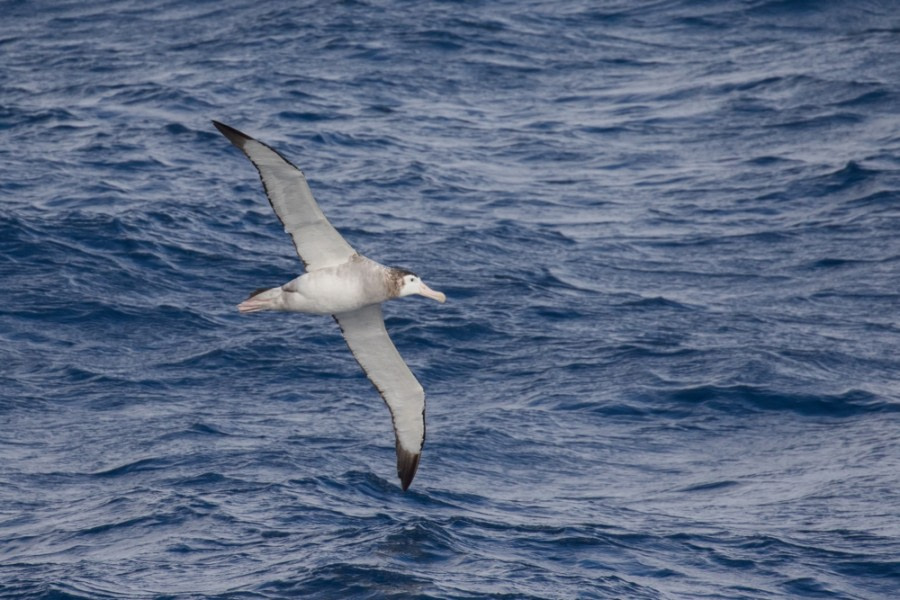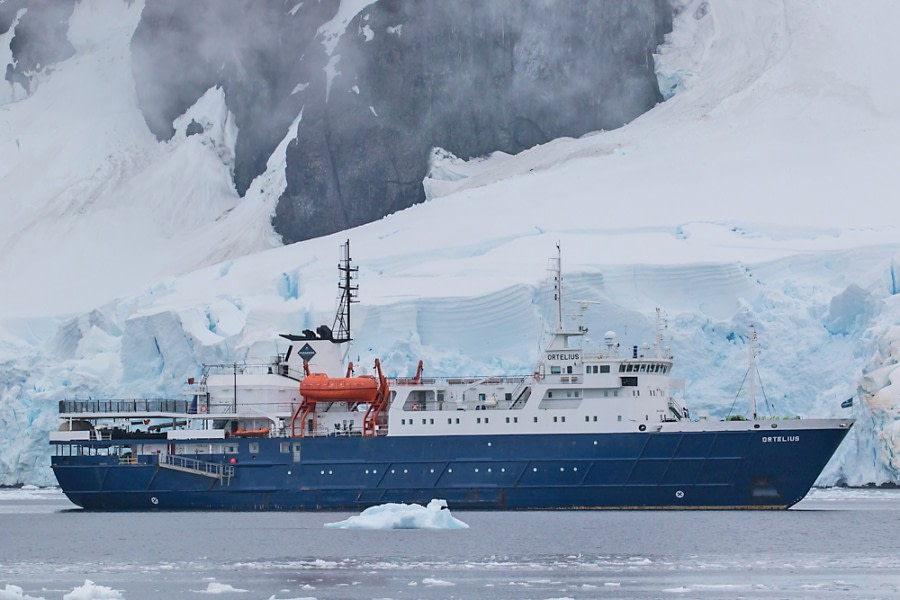| Date: | 20.02.2018 |
| Position: | 54°49‘S, 068°17‘W |
| Wind: | Calm |
| Air Temperature: | +17 |
Boarding Ortelius started late in the afternoon and we were soon checked in by our Hotel Manager and his assistant (DJ and Sava). We were shown our cabins and had some free time to get unpacked and settled in. Lovely to know that we don’t have to change our ‘hotel’ again until we’re back in Ushuaia. We soon began exploring our new home; perhaps the most important place to find was the Bar on Deck 6, where coffee/tea can be accessed 24/7 and where our bartenders can often be found if we fancy something stronger. Of course doors to the outside deck-space were also important to locate, so that when ‘albatross’, ‘whales’ and other delights are announced, we know how to get out there as quickly and efficiently as possible. A bit later we were summoned by Expedition Leader Lynn to a mandatory briefing in the Lecture Room on Deck 3. She welcomed us on board and introduced Third Officer Warren, who gave an all-important Safety Briefing and Lifeboat Drill. Now we are aware of what we should do if we see a fire or man overboard, and know precisely what to grab and where to go in the event of the ship’s general alarm going off. Seven short and one long blast calls us (warmly dressed) to the Bar, which doubles as our muster station. Once we are all there, radio communication between the bridge officers and ship’s crew keeps us informed of developments. The ‘abandon ship’ signal is a verbal command given by the Captain or Chief Officer, and we hope that today is the only time we hear it, followed by the reassuring words “for practice only”…Filing outside in orderly fashion and gathering next to the lifeboats completed the drill; we were then free to continue our explorations of the ship, or come out on deck with our cameras to enjoy Ortelius’ departure from Ushuaia and progress down the Beagle Channel. Before dinner we again gathered in the Lounge/Bar on Deck 6 in order to meet key crew/staff and learn about ship routine during our voyage. Hotel Manager DJ imparted useful information about mealtimes, Internet/Webmail access and treating the toilets nicely. He was followed by Expedition Leader Lynn, who introduced Captain Ernesto – the person who will get us there and back again safely – and then handed over to her team of staff for self-introductions. We raised a glass of bubbly (or orange juice) to the success of our voyage and then it was time for our first dinner aboard. After dinner Dr. Veronique was available in the ship’s hospital to hand out seasick medication and valuable advice. A stroll on deck to watch Humpback whales flipper-waving and the local bird population on the wing, a cup of tea or something stronger, and then most of us fell into bed after a busy and exciting day, hoping for smooth seas to lull us to sleep. Tomorrow morning will find us well on the way to our first stop.
